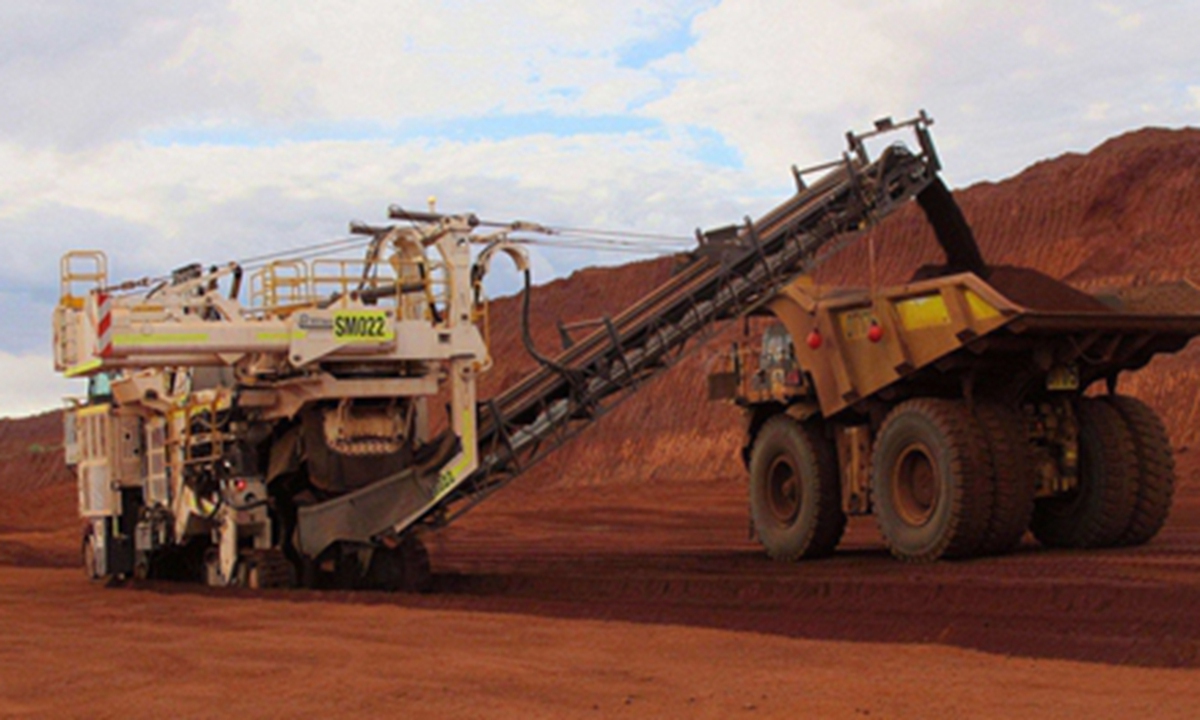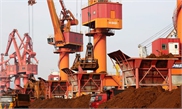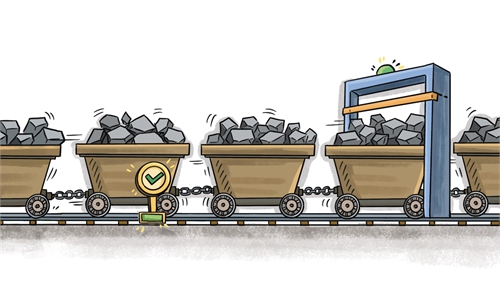
An iron ore mining site in Australia Photo: cnsphotos
Despite the continuous decline in volume, China's iron ore imports in June still recorded a rebound in value from the previous month, an indication that it has become an urgent need for the country to diversify sourcing of the commodity.China's iron ore imports reached 89.42 million tons in June, down 0.4 percent from May, while in US dollar terms, the import value grew 7.43 percent month-on-month to $16.78 billion, according to Chinese customs data released on Tuesday.
Among all the key commodities China imported in the first half of this year, the difference between the trends of the volume and value in China's iron ore trade is the most obvious. While iron ore imports gained 2.6 percent to 560.71 million tons in the first six months, the value of which surged 85.6 percent in US dollar terms to $93.01 billion, showed customs data.
The figures point to the stark fact that with iron ore prices surging to record highs, the urgency of China's diversification efforts has also been raised to an unprecedented level.
The rapid increase in iron ore prices has greatly boosted the costs of steel production in China, driving up the steel prices and other downstream production costs, which is not conducive to the country's economic development. Moreover, it is not just China's domestic industries that have suffered from the overheated prices, the global industrial chain may have also seen the adverse impact of the price transmission. This is because China is also a major steel exporter with total steel exports at 37.38 million tons in the first half of 2021.
At a time when China, as the world's largest iron ore consumer, hasn't sharply increased the import of the raw materials so far this year, there are also doubts as to whether the demand arisen from the global economic recovery was that strong to prop up the rapid climb of iron ore prices in recent months.
Against the backdrop, Chinese regulators have taken measures aimed at clamping down on soaring iron ore prices. Last month, China investigated the trading volume and prices of iron ore as part of its effort to stabilize the domestic market. Yet, it remains to be seen how iron ore prices will perform in the future.
Meanwhile, regardless of how complex the reasons are behind the iron ore pricing, there is a growing consensus that China needs to accelerate its iron ore diversification push in an all-round approach.
While at least 60 percent of China's iron ore imports is from Australia, other iron ore suppliers such as Brazil, India and South Africa are also believed to have the potential when it comes to increased supplies to China. In the first six months of this year, trade between China and South Africa soared 70.4 percent in US dollar terms, followed by trade between China and India with a growth of 62.7 percent, both outperforming the former's trade performance with other major trading partners. The iron ore trade is probably a big contribution behind such spectacular trade performance.
In addition, improving the utilization rate of steel scrap is also considered a necessary move to help reduce China's dependence on iron ore imports. In 2020, China's scrap utilization reached 260 million tons, which is estimated to reach 320 million tons by 2025, according to media reports.
Overall, the adverse impact of the record high iron ore prices on relevant industries has strengthened China's resolve to diversify the supplies of the important commodity, and such effort is bound to pay off as time goes by.



